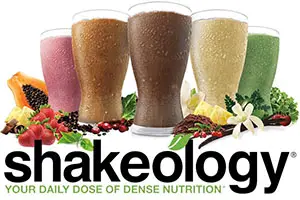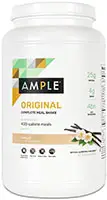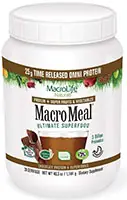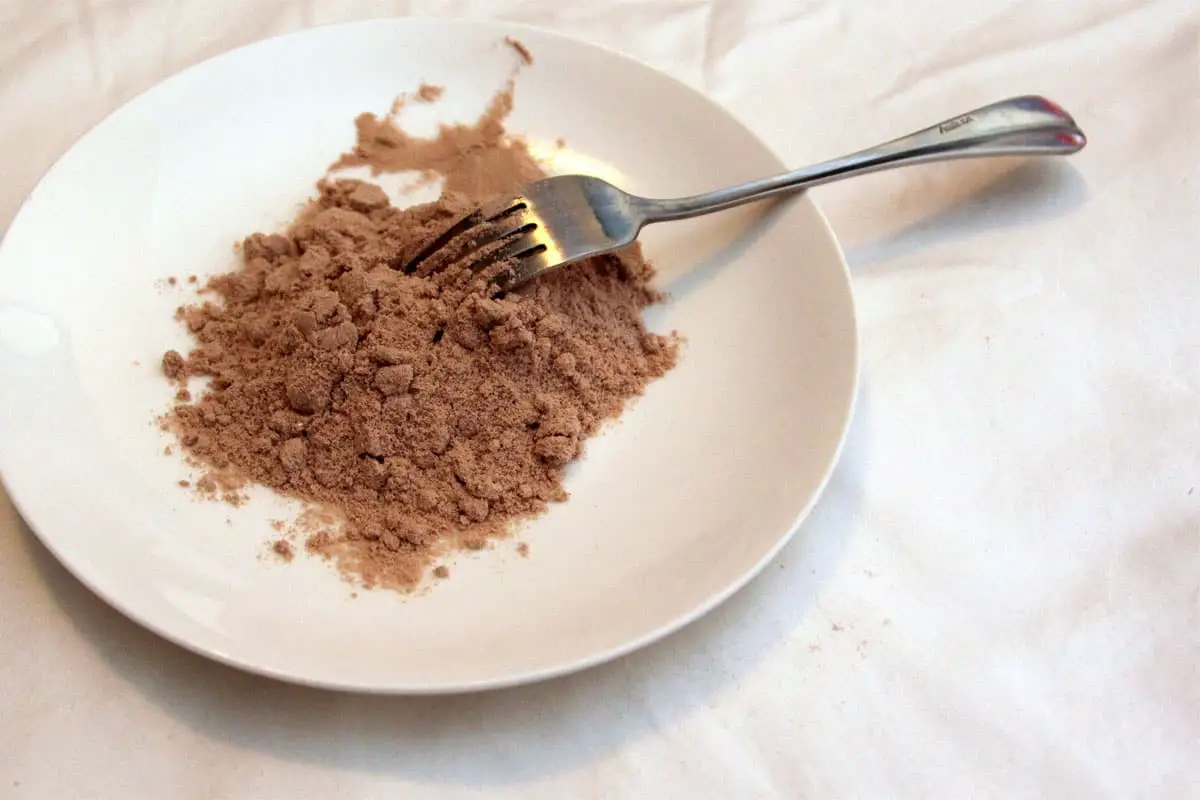Meal replacement shakes are becoming increasingly popular among those who want to lose weight. After all, they offer a good amount of nutrition for the person that is on the go. However, they come with their own set of benefits and risks.
The pros of meal replacement shakes are that they are convenient, easy to make, and effective in weight reduction and weight maintenance. On the other hand, the cons of meal replacement shakes are that they are not a long-term solution and don’t fix unhealthy eating habits.
This article discusses the pros and cons of meal replacement shakes, the difference between a meal replacement shake and a protein shake, and how to choose the best meal replacement shake.
What Are Meal Replacement Shakes?
Whether bottled or canned, meal replacement shakes are an easy way to get healthy and shed weight. They contain a wide variety of healthy ingredients and are often used for maintenance or weight loss.
Meal replacement shakes have been formulated to give your body nutrition, equivalent to eating a meal but with fewer fats and calories.
Pros of Meal Replacement Shakes
1. A Good Source of Protein
Many meal replacement shakes are a good source of protein, playing an important role in weight loss.
Protein keeps you satiated and full for a long period of time. In fact, higher protein diets are linked with increased fullness and reductions in hunger throughout the day.
According to one study (The effects of consuming frequent, higher protein meals on appetite and satiety during weight loss in overweight/obese men), men who consumed a high-protein diet experienced fewer cravings and a reduction in late-night desire to eat than their counterparts who ate a moderate amount of protein.
Other than that, high-protein diets help improve weight maintenance, reduce body fat, and increase lean body mass.
In one study (The effPostprandial thermogenesis is increased 100% on a high-protein, low-fat diet versus a high-carbohydrate, low-fat diet in healthy, young womenects of consuming frequent, higher protein meals on appetite and satiety during weight loss in overweight/obese men), researchers fed healthy women either a high-carbohydrate or a high-protein meal. They found that after 2.5 hours of eating, thermogenesis was doubled in women who consumed the high-protein meal, versus women who consumed the high-carbohydrate meal.
Thermogenesis is the process of production of heat in your body. Your body requires calories (energy) to generate heat. This is why increased thermogenesis equals increased energy expenditure and will cause weight loss over time.
In another study (A controlled trial of protein enrichment of meal replacements for weight reduction with retention of lean body mass) that compared high-carb meal replacements and high-protein meal replacements, both groups experienced similar weight loss at 12 weeks.
However, the study found that participants in the high-protein group lost more body fat than those in the high-carb group.
It’s important to know that some meal replacement shakes contain higher amounts of protein than others. Therefore, you should choose a meal replacement shake that is low in sugar but high in protein.
2. Contain Added Superfoods
Some of the more premium meal replacement shakes also contain added superfood blends, helping you get the health benefits of vegetables and fruits within the formula. This provides not only extra minerals and vitamins but also phytochemicals and antioxidants, which are beneficial for your health.
Phytochemicals are naturally occurring compounds found in plants that contribute to their smell, taste, and color. These compounds may help decrease your risk for certain cancers.
Plus, they can also reduce your risk of heart disease, high blood pressure, and diabetes.
3. Help With Faster Weight Loss
Meal replacement shakes can help you feel more satisfied and full while eating fewer calories. According to many studies, substituting two meals daily with a shake may help you lose weight faster.
According to an analysis, people who followed a partial meal replacement plan achieved a greater weight loss at three months than their counterparts who followed a low-calorie diet plan.
Also, according to one study, participants who consumed a shake lost a similar weight as people who ate a low-fat diet.
These shakes have also been found to promote weight loss in people with diabetes.
A clinical trial analyzed the safety of using liquid meal replacements for weight loss in people with diabetes. It found that people who took meal replacements showed a reduction in LDL (bad) cholesterol levels and body weight.
Apart from this, meal replacements can also help maintain weight loss after attaining your weight loss goals.
4. Provide More Nutrients Than Traditional Diets
Meal replacement shakes offer nutrients that you should get from food. When you cut back on high-calorie foods, it can be hard to get all of the nutrients you need from your diet.
Meal replacement shakes are often fortified with fiber, protein, minerals, and vitamins, which might help fill a nutrient gap while reducing your calorie intake.
Most shakes are rich in nutrients such as vitamin D, iron, calcium, and potassium, which many people aren’t getting in sufficient amounts. In addition to keeping your bones strong, calcium helps maintain your muscle function and heart rhythm.
How much calcium you require depends on age:
- Adults aged 50 or below need 1,000 milligrams of calcium every day
- Adults aged above 50 years need 1,200 milligrams of calcium per day.
Potassium is essential for the kidneys, heart, and other organs to work normally. Low potassium is linked with a risk of many disorders and diseases.
You need iron to produce hemoglobin, a part of red blood cells that transport oxygen throughout your body.
And vitamin D is important for maintaining healthy and strong bones.
5. Help You Avoid Unhealthy Processed Foods
Meal replacement shakes are convenient and easy to make, and they may help you avoid unhealthy processed foods.
One of the barriers to losing weight is the time it takes to cook a healthy meal. It’s easier and convenient to grab fast food or processed food when you are busy or stressed. However, processed foods can sabotage your weight loss efforts.
In addition to lacking essential nutrients, most processed foods contain high amounts of refined carbohydrates, artificial ingredients, and sugar.
Moreover, diets high in sugar and refined carbohydrates have been associated with mood disorders, hyperactivity, obesity, heart disease, and high blood pressure.
Furthermore, processed foods that are high in sugar, salt, and fat activate your brain’s pleasure centers, causing overeating.
On the other hand, meals prepared from whole foods are great for losing weight, but that is not always possible with a hectic schedule. Meal replacement shakes are easy to make and a healthier alternative to processed foods.
6. Curb Your Sweet Tooth
The best meal replacement shakes do not contain artificial sweeteners or sugar. They can help you rid yourself of your dangerous and unhealthy sugar addiction.
The best meal replacement shakes will healthily satisfy your sweet tooth by containing sugar-free alternatives like Stevia.
Stevia does not contain artificial ingredients, calories, and carbohydrates and is about 200 times sweeter than table sugar.
7. Revs Up Metabolism
Adding protein to your diet is a good way to help increase your metabolism. Boosting your metabolism is one of the important steps to losing weight, as it lets you burn more calories.
Your body uses calories to digest and metabolize the food. This is known as the thermic effect of food (TEF), and it’s higher for protein (20 to 30%) than fat (0-3%) or carbohydrates (5-10%).
A high protein intake tends to increase metabolism due to the high thermic effect and other factors. It makes you burn more fat, even during sleep.
So, you should aim for a meal replacement shake with 15-20 g (0.52-0.70 oz.) of protein. The most common protein sources are whey, pea protein, rice protein, quinoa, and in many meal replacement shakes.
In addition, studies show that they can significantly help build lean muscle and lose weight.
Here are some of the benefits of whey protein:
- Promotes the growth of muscles
- May reduce blood pressure
- May help decrease inflammation
- May help with weight loss
Cons of Meal Replacement Shakes
8. They Don’t Change Your Eating Habits
Diets don’t help with weight loss in the long-term.
Weight loss for the long-term needs permanent changes in activity and eating patterns. While drinking shakes can help you shed body weight, they don’t change your eating habits.
You will likely gain your weight back if you go back to your unhealthy eating habits.
9. They Are Not a Long-Term Solution
Meal replacement shakes are not a long-term solution for weight loss and weight maintenance.
While many meal replacement shakes offer vital nutrients, they cannot replace a healthy, balanced diet of whole foods.
Whole foods are rich in enzymes, plant compounds, antioxidants, minerals, and vitamins that are hard to put into a meal replacement bottle.
In fact, whole foods, such as legumes, vegetables, and fruits, contain more fiber than meal replacement shakes.
10. Some Meal Replacement Shakes Contain Unhealthy Ingredients
Many shakes are prepared with wholesome ingredients, such as vegetables, fruits, and whole grains.
However, some meal replacement shakes contain unhealthy ingredients, such as chemical preservatives, artificial flavors, corn syrup, and added sugars.
Added sugar is high in calories and contains no essential nutrients. Regularly consuming added sugar in excess can cause compulsive overeating.
Plus, it is associated with conditions such as inflammatory diseases, type 2 diabetes, metabolic syndrome, and obesity.
Unfortunately, some meal replacement shakes contain more sugar than protein. So, you should always check the label before buying a meal replacement shake.
It’s important to know that a healthy shake should contain only a few grams of sugar.
Difference Between Protein Shakes and Meal Replacement Shakes
Meal replacement shakes and protein shakes are made for different goals and vary in nutritional composition.
Protein shakes consist only of protein, usually specific amino acids or whey protein, with no additional nutrients. Protein shakes are used for muscle gain and athletic performance. They contain about 25 grams (0.88 oz.) of protein per serving.
These shakes are formulated to be a supplement in addition to multiple meals throughout the day. It’s important to know that they should not be used as a substitute for a meal.
On the other hand, meal replacement shakes contain protein, less than a protein shake. They have a protein content of 10 grams (0.35 oz.) per serving.
However, they are fortified with minerals and vitamins and offer more carbohydrates and fiber per serving than protein shakes.
What Should You Look for in a Shake?
There are a few things you need to consider when buying a meal replacement shake.
You can easily differentiate between a bad and good shake by looking at the nutrition label. You should look for a balance of protein, fats, and carbohydrates.
A meal replacement shake should contain 10-13 g (0.35-0.45 oz.) of healthy fat, 18 vitamins and minerals, 20 g (0.88 oz.) of protein, and a good amount of fiber per serving.
Do not purchase a meal replacement shake containing added sugars, artificial flavors, or over 400 calories per serving.
You can also use added ingredients to supplement your meal replacement shake for more benefits and flavor.
You can add spinach, which is rich in vitamin C and will increase your body’s ability to absorb nutrients. Greek yogurt will add more vitamin B12, zinc, protein, vitamin B6, potassium, and calcium.
Adding a very small amount of cinnamon can have antioxidant benefits, and decrease inflammation and blood pressure.
You can also add ground flaxseed, nut butter, nuts, and shredded cabbage to your meal replacement shake for protein and fiber.
If you want to use green smoothies as a shake, combine a superfood, fruit, a liquid base, and leafy green vegetables. You can also add an optional protein if you want.
Superfood ideas include ginger, turmeric, cinnamon, chia seeds, and ground flaxseed. Proteins could be avocado, seed butter, or protein powder. You can choose strawberries, blueberries, mango, or bananas for fruit.
Liquid-base options include plain water, pomegranate juice, coconut water, coconut milk, or almond milk. And leafy green veggies ideas include lettuce, chard, collard greens, or kale.
When Should You Take Meal Replacement Shakes?
Breakfast
Do you skip your breakfast too often? If you do, you must know that skipping breakfast makes your body crave foods that are high in fat and sugar.
Also, not having your breakfast intensifies your hunger pangs, which, in turn, increases your calorie intake.
If you are in a hurry and have no time to prepare breakfast, you should consider having a meal replacement shake.
Article to check out: Are Meal Replacement Shakes Good for Breakfast?
Workout
Most meal replacement shakes are rich in whey protein that aids in the repair and building of your muscles. Taking a shake as part of your workout meal will supply your muscles with amino acids vital to your workout recovery and weight loss.
You can also add fruits and vegetables to your shakes to meet your nutrient and energy requirements throughout the day.
Article to check out: Meal Replacement Shakes: Drink BEFORE or AFTER Workout?
Snack
You can also have a meal replacement shake as a snack. Some days, a tight schedule could mean difficulty in making out time to eat something nutritious. Because of the convenience shakes offer, you can easily store a serving in a bottle and mix it up whenever you want to drink it.
Our Top Recommended Meal Replacement Shakes
NAME | DESCRIPTION |
#1
Shakeology | Shakeology is our most recommended meal replacement shake because it's a nutrient dense shake that includes:
Thus, making it perfect for weight loss, increased energy, digestive health, reduced cravings, and overall better health. Plus, Shakeology has stood the test of time as it has been around since 2009 without compromising its whole food ingredients. Instead, Shakeology has improved their flavors in taste and potency, and has even added vegan and gluten free options. Learn More About The Clinically Tested Shakeology Shake Here |
#2
Ample Meal | Ample Meal is an interesting meal replacement as it focuses more on healthy fats. Ample Meal includes:
With Ample Meal, you can get a nice fulling 400 calorie meal with 2 scoops or do a single scoop of 200 calories if your goal is weight loss. Similar to Shakeology, it’s free of all the artificial junk that most meal replacement shakes have today. |
#3
MacroMeal | MacroMeal is another interesting meal replacement shake as it contains a blend of fast, medium, and slow digesting protein that delivers sustained energy. MacoMeal also includes the following core ingredients:
Although not technically a meal replacement as it’s low in carbohydrates, people have found it to be filling because of the MCT oils and slow digesting proteins. |
Conclusion
While they’re not a long-term solution, meal replacement shakes are a good way to help you build lean muscle and reach your weight-loss goals.
However, not all shakes are made equal. Some meal replacement shakes contain unhealthy ingredients, such as chemical preservatives and corn syrup.
The best shakes are loaded with essential nutrients, protein, fats, carbohydrates, minerals, and vitamins, meaning you will be full for longer while getting the health benefits of a nutritious meal.
Therefore, you should make sure to choose a shake that is high in protein and low in artificial ingredients and sugar.
Sources
- PubMed: A randomized, controlled, crossover trial to assess the acute appetitive and metabolic effects of sausage and egg-based convenience breakfast meals in overweight premenopausal women
- PubMed: The effects of consuming frequent, higher protein meals on appetite and satiety during weight loss in overweight/obese men
- PubMed: Increased protein intake reduces lean body mass loss during weight loss in athletes
- PubMed: Postprandial thermogenesis is increased 100% on a high-protein, low-fat diet versus a high-carbohydrate, low-fat diet in healthy, young women
- PMC: A controlled trial of protein enrichment of meal replacements for weight reduction with retention of lean body mass
- University of Rochester Medical Center: Nutrition to Reduce Cancer Risk
- PMC: Meal Replacement Beverage Twice a Day in Overweight and Obese Adults (MDRC2012-001)
- PubMed: Weight management using a meal replacement strategy: meta and pooling analysis from six studies
- Oxford Academic: Meal Replacements Are as Effective as Structured Weight-Loss Diets for Treating Obesity in Adults with Features of Metabolic Syndrome
- PubMed: Liquid meal replacements and glycemic control in obese type 2 diabetes patients
- Office of Dietary Supplements: Calcium
- CBS News: Processed carbohydrates are addictive, brain study suggests
- PMC: A high-protein diet for reducing body fat: mechanisms and possible caveats
- Frontiers in Bioscience: Impact of sugar on the body, brain, and behavior








